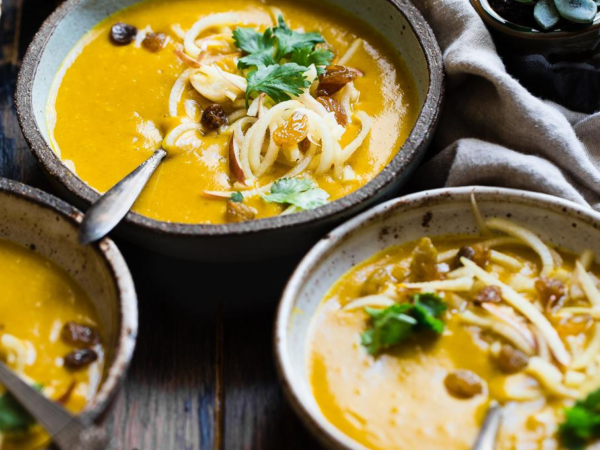Summary. Eating food combinations that mix different types of food has long been debated. According to research, there have been no conclusive findings that mixing different types of food together is unhealthy. However, more research is needed to determine how these combinations may affect digestion and nutrition. Eating a balanced diet with all the essential nutrients is still recommended for optimal health.
Mixing different types of food together is a popular trend that many are sceptical about, including whether or not it is unhealthy. We are here to dive deep and examine if this is something you should be avoiding. At first glance, the idea of mixing different types of food together may seem unlikely.
Many people think of a variety of ingredients, spices, textures, and temperatures blended all together as overwhelming to your palette. But this concept has evolved over the years and it’s now one of the hottest food trends across the globe.
Not only has it been proved to be healthier than eating pre-made dishes but it also a great way to make the most of the ingredients you have in the kitchen and your fridge. So, is mixing different types of food together unhealthy? To answer this, we must look at some of the benefits and drawbacks. Eating food that is freshly made with a mix of ingredients provides your body with the nutrients it needs.
- Pros & Cons of Mixing Food Types
- Definition of Nutritional Deficiencies
- Strategies for Nutritious Food Combinations
- Effects of Combining Carbohydrates & Proteins
- Short and Long-Term Effects on Health
- Effects on Digestion & Energy Levels
- Mindful Eating Habits
- Bottom Line
- Answers To The Most Common Questions
An overview of the research conducted around the effects of different food types

It is well-known that maintaining an overall healthy diet is the key to a long, healthy life. It is especially important to understand the effects of different food types on our bodies in order to make the best possible dietary choices. However, one often overlooked aspect of diet is the potential negative impact of mixing different types of food together.
Studies have found that mixing certain types of food together can inhibit your body’s ability to properly absorb vitamins and minerals. For example, eating too many proteins at the same time as too many carbohydrates can reduce the digestibility of both.
The digestion of proteins is further reduced when acids, such as those found in citrus fruits or vinegar, are simultaneously consumed. Most people are unaware of the potential problems associated with mixing different types of food together. Eating certain types of food separately from others, as suggested by some dietary plans, may have numerous benefits.
This could include improved digestion, better absorption of nutrients, better digestion of fats, better digestion of proteins, improved fat metabolism, and better regulation of blood sugar levels.For instance, some argue that mixing different types of food is beneficial for the body as it can provide more vitamins and minerals than if those foods were eaten alone.
In conclusion, while it is true that the effects of different foods mixed together can vary greatly, the best advice is to steer clear of them as much as possible. Eating a balanced and varied diet is the best way to ensure that your body is getting the nutrients it needs without any undesired health effects. Therefore, be mindful of what you eat and be sure to keep a healthy balance of different types of food.
A brief explanation as to why this topic has become so pressing

We live in a world filled with incredible flavors and tastes. With so many different types of cuisines, cultures, and ingredients, it can be tempting to mix them together for a truly unique and delicious meal. But is it really healthy to mix different types of food together?
The simple answer is yes, but with some caveats. Mixing different types of food together can be both healthy and unhealthy, depending on the combination.However, if you are mixing something like potatoes with a high fat cheese, that may be considered an unhealthy combination. It is important to keep in mind that when you mix different types of foods together, certain nutrients can be lost or weakened.
For example, when you mix together vegetables and proteins together in one dish, their nutritional benefits will be different. Additionally, the way you cook the dish can greatly affect its nutritional value.On the other hand, combining different types of food together can also be beneficial. For instance, mixing two different grains together can provide more nutritional value than if you stuck to just one.
Additionally, cooking with herbs and spices can provide an increase in vitamins and minerals and will enhance the flavor of the dish. When it comes to whether or not it is healthy to mix different types of food together, the key is moderation. Eating dishes that are filled with different flavors and ingredients can be both healthy and delicious, as long as you choose the right combination and cook the food in a healthy way.
Pros & Cons of Mixing Food Types
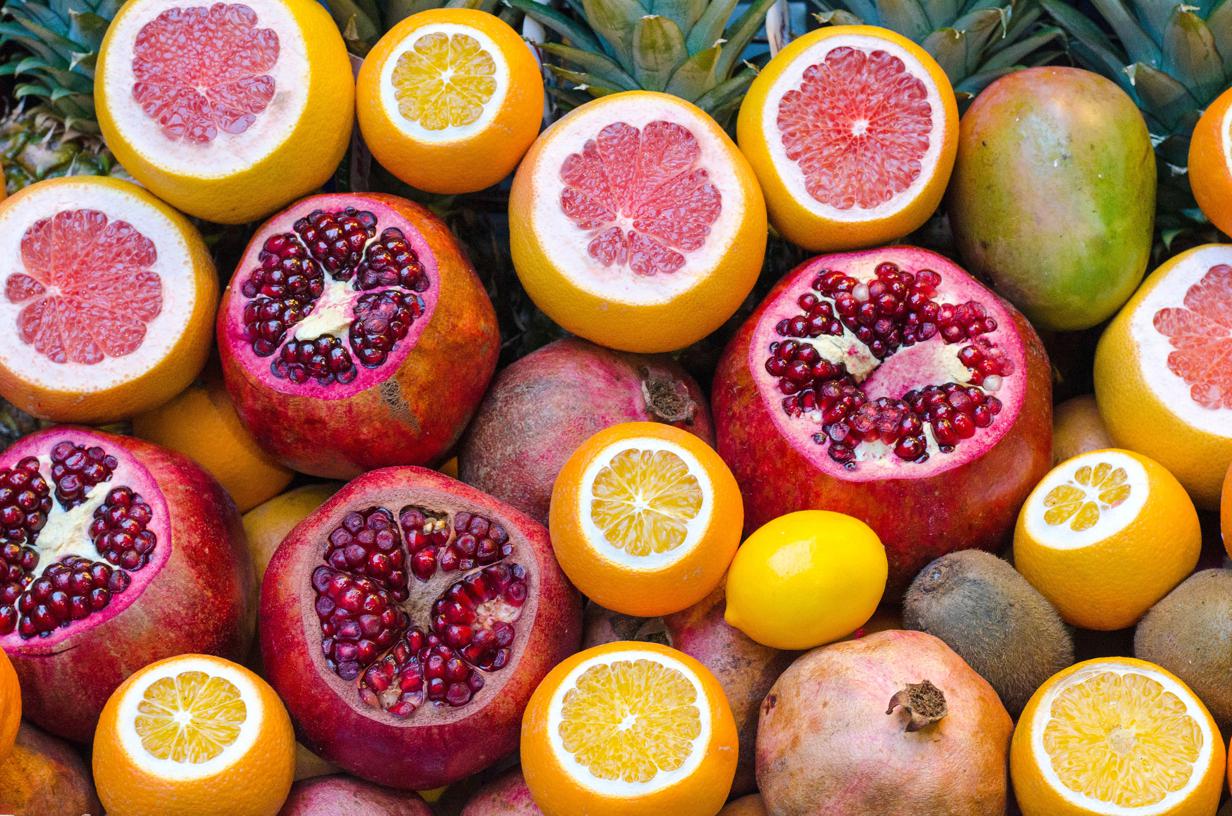
When it comes to eating healthy, mixing different types of food together is often overlooked or even discouraged. However, mixing foods can actually be an extremely beneficial approach to eating, as it can add variety to your diet, providing you with numerous different vitamins and minerals.
The key to finding a balance is to be mindful of which types of food you’re mixing together, as some foods can interact in a negative way, or simply be unhealthy when eaten together. When looking at the pros and cons of mixing food types, one advantage is that it makes your diet more interesting.As a result, you’ll be more likely to stick to a healthy lifestyle, avoiding unhealthy temptations that may be available.
Additionally, mixing food types can also provide more nutrition in your meals, as you’ll have more variety. Different foods provide different nutrients, and when you mix them together, you’ll be able to get all of the vitamins and minerals your body needs from the same meal. On the other hand, the cons of mixing food types can be cause unintentional unhealthy combinations. Additionally, many food combinations can cause different reactions in your body, such as digestion problems or bloating.
Therefore, it’s important to be mindful of the combinations you’re making and make sure they are as beneficial as possible. Overall, mixing food types can be an extremely beneficial approach to eating, so long as you are aware of the potential pros and cons. Being mindful of how different foods interact and what combinations you should avoid is one of the best ways to ensure a healthy and balanced diet. By eating a variety of food combinations, you’ll be able to get your body the necessary nutrition, without having to eat the same old boring meals.
Reasons why it can be a beneficial dietary practice and potential health risks associated with mixing food types
Mixing different types of food together can be a very beneficial dietary practice. The key to a healthy diet is variety, and mixing it up helps to ensure that you get the right balance of nutrients and other dietary components in your daily intake. For example, grains like rice and wheat are both good sources of vitamins and minerals, but if you mix them together, you get both the advantages of each grain. Not only does this increase your nutrient intake, but it also provides more texture and flavor.
Moreover, mixing different types of food together can also help to reduce environmental impacts. Eating a variety of foods helps to reduce the amount of food waste, as you can use a variety of plant-based sources instead of relying on fewer animal sources to provide all your dietary needs. Additionally, this practice encourages diversity within your diet, which is an important aspect of a healthy diet.
Eating processed foods, which are often made with multiple ingredients, can lead to an increase in unhealthy trans fats and sugars. Additionally, if you mix different types of food that are out of balance in terms of nutrient composition, then you can cause nutrient deficiencies. To ensure that you benefit from mixing different types of food, it is important to understand the nutritional content of the foods you are combining and make sure your portions are balanced.
Definition of Nutritional Deficiencies
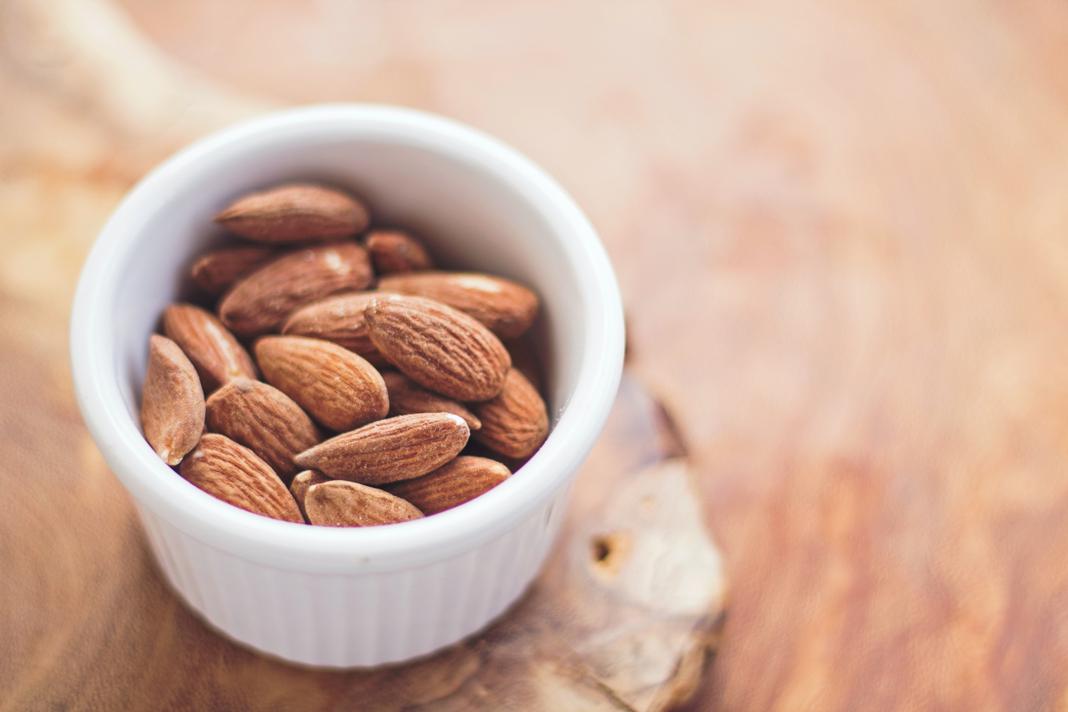
When it comes to mixing different types of food together, the potential health risks can vary depending on the foods chosen and how they are combined. The term “nutritional deficiency” describes the lack of certain key nutrients, such as essential vitamins and minerals, that are vital to our health and well-being. Eating a diet that lacks a variety of different food types can result in deficiencies that can cause a number of health problems.
Eating a wide variety of food helps to ensure that your body is getting all the essential nutrients it needs. Mixing different types of food together can be beneficial to your health in many ways. Eating a variety of food helps to ensure that your body is receiving a balanced intake of essential vitamins and minerals.Furthermore, combining certain foods may help boost the nutritional value of your meals.
For example, pairing foods such as iron-rich foods with foods that contain vitamin C may help to increase your body’s absorption of the iron. However, it is important to note that mixing different types of food together can also pose potential risks. For example, combining certain food types can cause food allergies. Eating foods that contain certain proteins has the potential to trigger allergic reactions in some people.
Some foods can also interfere with the absorption of certain vitamins and minerals if eaten together. Foods such as calcium and iron should be eaten separately in order to maximize absorption. In conclusion, mixing different types of food together can be beneficial to your health if done in a careful and balanced manner.
Eating a wide variety of food helps to ensure that your body is getting all the essential nutrients it needs. However, certain combinations of food may increase the risk of nutritional deficiencies and food allergies, so it is important to be mindful of the ingredients and combinations you are using.
What Happens When Nutrients Are Lacking From The Diet?
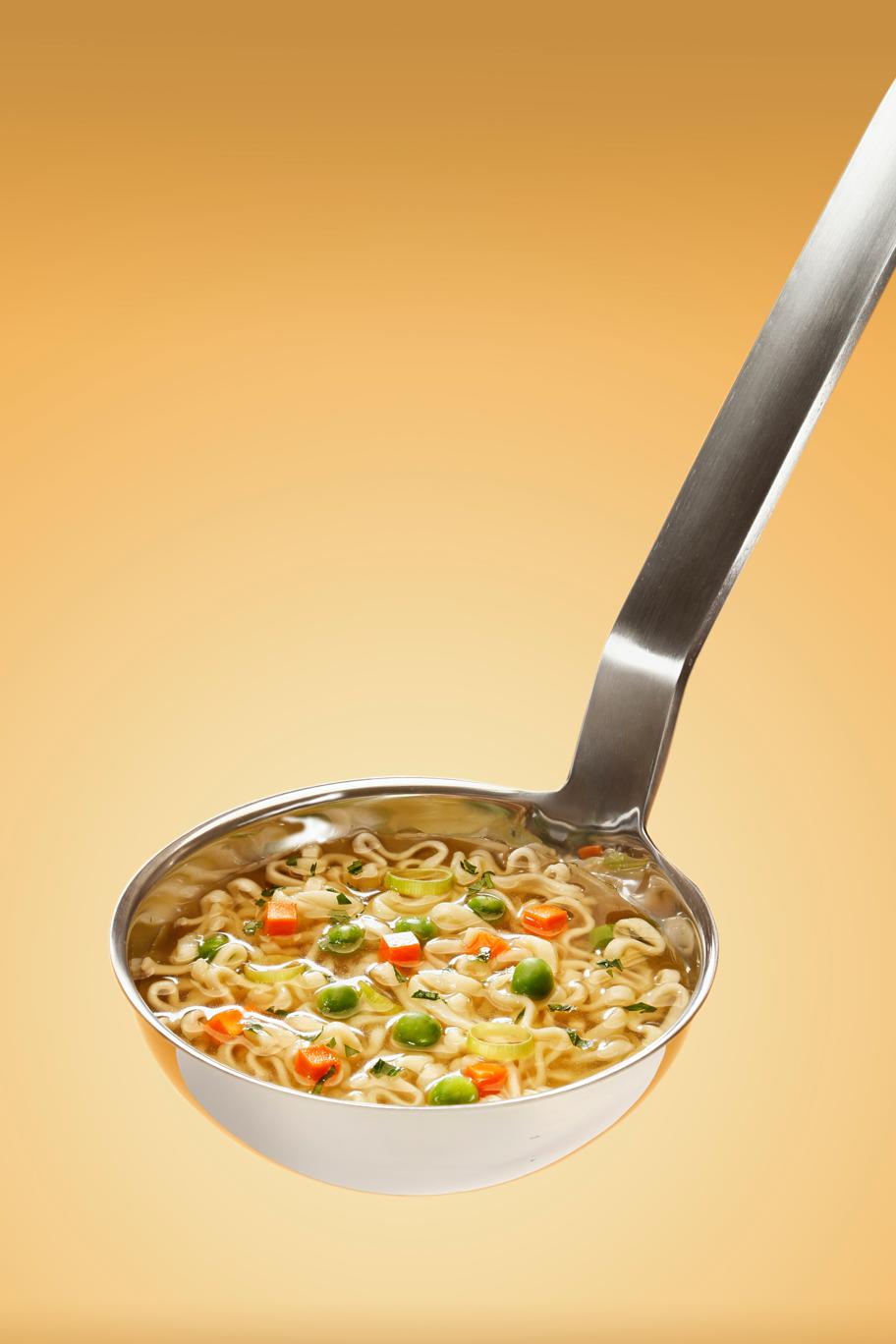
Nutritional deficiency occurs when you are not receiving essential nutrients from your diet. Nutrients are primarily obtained through the consumption of nutrient-rich food, and when there is a lack of this food, a nutritional deficiency arises. Nutrients include proteins, minerals, vitamins, carbohydrates, fats, and more, and all of them are required for good health.
A nutritional deficiency can have serious consequences, including fatigue, weakness, impaired physical and mental performance, poor growth, and even certain diseases. When nutrients are lacking from the diet, various health complications can arise.Deficiencies in important minerals like calcium, iron or zinc can lead to bone malformations, impaired immunity, and even an increased risk of certain cancers.
Without enough protein, athletes may experience decreased muscle mass and difficulty in repairing muscle damage. Even something as simple as not eating enough fiber can lead to digestive issues. Mixing different types of food together does not necessarily make it unhealthy.
Eating a variety of fruits, vegetables, whole grains, legumes, nuts and seeds, as well as lean meats and fish, is the best way to ensure proper nutrition. Planning meals and snacks that contain both healthy carbohydrates and proteins will help to keep your blood sugar level and provide your body with adequate nutrition. Eating a balanced diet is key to optimal health, so it is important to ensure that your diet contains a variety of foods.
Strategies for Nutritious Food Combinations
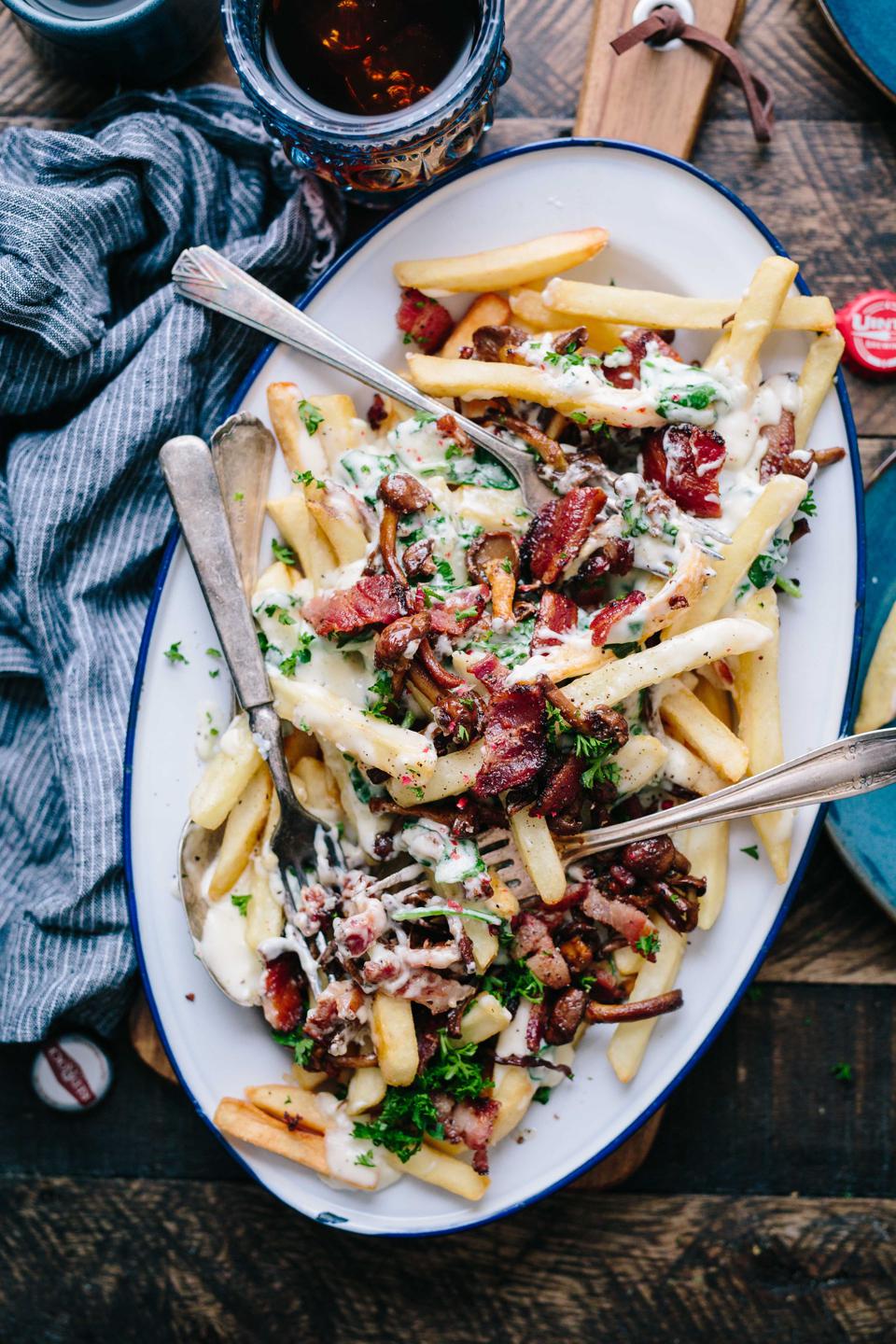
As much as we love our favorite dishes, when it comes to our nutrition, we want to make sure that the food we eat is working together to keep us healthy. There’s so much conflicting information out there about which foods are truly healthy and which combinations of those foods are the most beneficial. So, the question remains: is mixing different types of food together unhealthy? The answer to this question depends largely on the types of food being combined and in what amounts.
Generally speaking, healthy food combinations can improve our overall nutrition, whereas unhealthy combinations can be detrimental. The key is to pair nutrient-dense foods that work synergistically together and avoid overeating. To get the most out of these nutritionally beneficial combinations, it’s important to understand which foods complement each other and why.
For example, pairing complex carbohydrates with protein and fat helps the body absorb the carbohydrates more slowly and evenly, which keeps blood sugar levels in check. Another example is pairing a food high in iron with one rich in Vitamin C, as this helps the body absorb the iron more efficiently. You can also combine dark leafy greens with calcium-rich foods like yogurt, milk, and cheese, as this helps with the absorption of the greens’ antioxidants.
In addition to food pairing tips, there are also some basic rules to keep in mind when creating a nutritious meal. Make sure to include all three macronutrients in your meals or snacks – proteins, carbohydrates, and healthy fats. Eating a variety of colors and textures from the food groups is also important to ensure you’re getting as many vitamins, minerals, and antioxidants as possible.
To sum up, is mixing different types of food together unhealthy? Not necessarily. While you do need to be mindful of the combination of foods you’re eating, remember that the nutrients found in these foods are necessary for a healthy, balanced diet. Just make sure you’re pairing nutrient-dense foods, controlling portion sizes, and not overeating. With some simple strategies, you can enjoy all the health benefits that come with a nutritious food combination.
Tips for creating satisfying and nutritious meals while mixing different foods

Cooking with different types of foods can be an incredibly rewarding experience. Not only can you discover entirely new and exciting flavors, but you can also create delicious and nutritious dishes with the addition of different types of food. While it’s true that combining different types of food can sometimes be unhealthy, this isn’t always the case. It all comes down to following a few key tips to ensure the taste, texture, and nutrition of the meal are up to par.
When combining different types of food, the key to success is all about balance. For example, the simplest way to mix different foods together is combining multiple ingredients of a similar type. If you’re going to add two types of food to your dish, try to include a base, such as a grain, and a vegetable. This will help to ensure all of the different flavors mesh together in harmony.
Using a variety of grains can really add texture and flavor to your dish. Healthy fats are also key when it comes to preparing a satisfying and nutritious meal. Fats provide a source of essential fatty acids, vitamins, and minerals, all of which work together to help fuel your body. Healthy fats, such as avocados, nuts, fatty fish, and olive oil provide an extra layer of flavor and help to fill you up.
Try adding these ingredients to your dish to add some extra flavor and keep your energy levels up. Cooking with different types of foods can also help to diversify your nutrient intake. Different foods contain different nutrients, so adding a variety of ingredients to your meal can help to ensure that you’re getting the necessary amount of vitamins and minerals.
Finally, flavor is key when it comes to creating a satisfying and nutritious meal. There are a variety of different herbs and spices available to choose from. Try adding these ingredients to your dish for a more flavorsome and robust meal.
There are also a variety of different sauces and marinades that can be used to enhance the flavor of your dish and give it a more savory quality. Mixing different types of food together doesn’t have to be unhealthy. By following these tips and being careful to keep your meals balanced, you can create a variety of delicious and nutritious dishes that can be enjoyed anytime.
Effects of Combining Carbohydrates & Proteins

When it comes to combining carbohydrates and proteins, there is often a great debate about its benefits and drawbacks. Some people believe that mixing different types of food together can be unhealthy, especially if the combinations are not balanced. After all, eating too much of either type of food can cause unwanted health problems.
But, it’s important to understand that combining carbohydrates and proteins can provide some great nutritional benefits. When the two food groups are combined in the right proportions, it can result in a meal that is both satisfying and nutritious.This means that the nutrients from each food source are more readily available to your body. The combination can also help to keep you full for longer periods of time, making it an ideal choice for weight management.
In addition to the physical benefits, mixing proteins and carbohydrates can also be great for your mental health. Eating a balanced meal can give you the energy to be productive and think clearly without feeling overly full or heavy. Overall, there can be great benefits to combining proteins and carbohydrates. While eating one or the other can be beneficial on an individual basis, a combination of the two can help to ensure your body is taking in the right nutrients to stay healthy and energized.
So, the answer to the question of whether mixing different types of food together is unhealthy is no. With the right balance and portion sizes, combining carbohydrates and proteins can be a great choice for your nutrition plan.
Best practice suggestions when eating carbs and proteins

It’s a common misconception that mixing different types of food together is unhealthy, but when it comes to eating carbs and proteins, the best practice is actually to mix them together. Eating proteins and carbohydrates together is a great way to ensure that you get adequate amounts of both nutrients, as well as enough vitamins and minerals to support a healthy lifestyle.
Protein and carbohydrates work together in the body to build muscles, provide energy, and help maintain a healthy weight. When eaten together, they can also help you feel fuller for longer, and can help prevent overeating. When you eat carbs and proteins together, choose foods that offer a balance of nutrients and provide fiber, vitamins, and minerals.
Choose lean proteins such as poultry, beans, and fish. Make sure the protein portion is about the size of the palm of your hand. Complete the meal with healthy fats, such as olive oil, nuts, and seeds. This combination will help keep your blood sugar levels stable, energized, and maintain a healthy weight.
Eating protein and carbohydrates in the same meal does not mean that you need to increase your portion size. Instead, focus on eating balanced meals to maintain a healthy weight in the long-term. In conclusion, it is important to remember that mixing different types of food together isn’t necessarily unhealthy.
Eating protein and carbohydrates together is a great way to ensure that you get the most out of your meals. Just make sure to balance your meals with healthy fats, make wise food choices, and watch your portion sizes to keep yourself healthy and energized.
Short and Long-Term Effects on Health

Mixing different types of food together can have both short-term and long-term effects on your health. While it is generally not unhealthy to mix different types of food together, the way you prepare them and the amount of fat, sugar, salt, and preservatives in them can have a big impact on your overall health.
In the short-term, eating a variety of foods can help keep your energy levels up and make you feel more satisfied throughout the day. It also ensures that you are getting the full range of essential vitamins, minerals, and antioxidants from different food sources.Eating too much of these foods can lead to weight gain and an increased risk of developing high cholesterol, as well as other cardiovascular conditions.
In the long-term, mixing different types of food together can have positive and negative effects. Eating healthy, balanced meals with a variety of nutrients can reduce the risk of disease and help to promote overall health and wellness.
Overall, there isn’t a set rule about whether it is healthy or unhealthy to mix different types of food together. The key is to ensure that you are eating a balanced, varied diet and to keep an eye on the amount of unhealthy additives you are consuming. By doing so, you can help to protect your health both in the short-term and long-term.
Negative and positive health effects when combining different food types

When it comes to combining different types of food, opinions are divided about its health effects. Some people believe that combining different food types in one meal is unhealthy, while others argue that it can be beneficial in certain aspects. The truth is, mixing different types of food can go both ways. While there are some positive health benefits associated with this practice, there are also some potential negative health effects.
In order to get the most out of combining different food types, it’s important to understand both sides of the argument, as well as what foods work best together.Combining different foods in a single meal means you’re getting a greater variety of nutrients in each dish, which could potentially lead to better overall health.
Furthermore, combining different food types may make for more interesting meals that are more enticing to eat, which can lead to healthier eating habits in general. On the flip side, combining different food types could potentially have some detrimental health effects when done in excess. This is especially true when it comes to processed, pre-packaged and processed desserts and snacks.
Additionally, combining different food types can encourage overeating or eating in excess when not done in moderation. At the end of the day, it’s important to remember that everything in moderation is key. Combining different food types can be beneficial when done sensibly, but can be detrimental to your health if overdone. Moderation is key, and understanding which foods are best to combine can ensure you get the most out of your meals.
Effects on Digestion & Energy Levels

It is fairly common knowledge that eating healthy is key to having a healthy digestive system and adequate energy levels throughout the day. But what many of us may not consider is the potential effects that mixing different types of food together can have on our digestion and energy levels.
While there might be times when mixing different types of food together can be beneficial, there may also be times when it can be detrimental to your overall health. When done in moderation, combining different types of food can have positive effects on digestion and energy levels.
If you mix and match various types of foods, you may end up exposing your body to a larger variety of nutrients which can help to promote overall health. In addition, there is some evidence that suggests that these combinations of foods can also help to make digestion more efficient, overall. However, it is important to pay close attention to combining different types of food, as this can also carry certain risks.
Furthermore, when some types of food are combined with certain drinks, especially carbonated beverages, there can be an increase in the onset of symptoms of bloating, acidity and heartburn. If you experience any of these symptoms after consuming certain food combinations, it is always best to stop the combination and seek medical advice if necessary.
In conclusion, while mixing different types of food can sometimes have a positive effect on digestion and energy levels, it is important to be aware that it can also have a negative effect. It is best to pay close attention to what types of foods you are combining and the amount that you are consuming, to ensure that you are receiving the right nutrients without experiencing any adverse reactions in the process.
Digestive response to combinations of certain food types

It’s a common saying that it’s not wise to mix different types of food together, especially if you have a sensitive stomach. While there’s no easy answer to this question, it’s important to understand how different components of food interact with your body’s digestive system so you can make the best decision for your health.
First, it’s important to understand the basics of digestion. When you eat food, enzymes break down the food in your stomach and small intestine into molecules small enough to be absorbed by your body. Depending on the type of food being digested, different enzymes are released to support the breakdown of different components. For example, proteins will be broken down into individual amino acids, carbohydrates into sugars, and fats into fatty acids.
Since different types of food require the use of different enzymes, there’s essentially a competition happening in your digestive tract between the food components and the enzymes. This can lead to food not being digested as efficiently as it could if only one type of food was consumed.
Furthermore, if proteins and carbohydrates are consumed together, it can lead to fermentation of the carbohydrates in your digestive tract, which can result in bloating, indigestion, and other digestive issues. On the other hand, there are also some potential benefits to mixing certain types of food. For example, consuming a combination of protein and carbohydrates can help to fuel your body with long-lasting energy and provide better absorption of vitamins and minerals.
Overall, mixing different types of food together can potentially lead to digestive issues, but it ultimately depends on the individual. If you have a sensitive stomach, it’s best to avoid mixing proteins and carbohydrates together and stick with one type of food at each meal. But if you’re more adventurous and like to explore new culinary combinations, it may not be as unhealthy as it’s often claimed. The best approach is to experiment and find what works best for your body.
Mindful Eating Habits
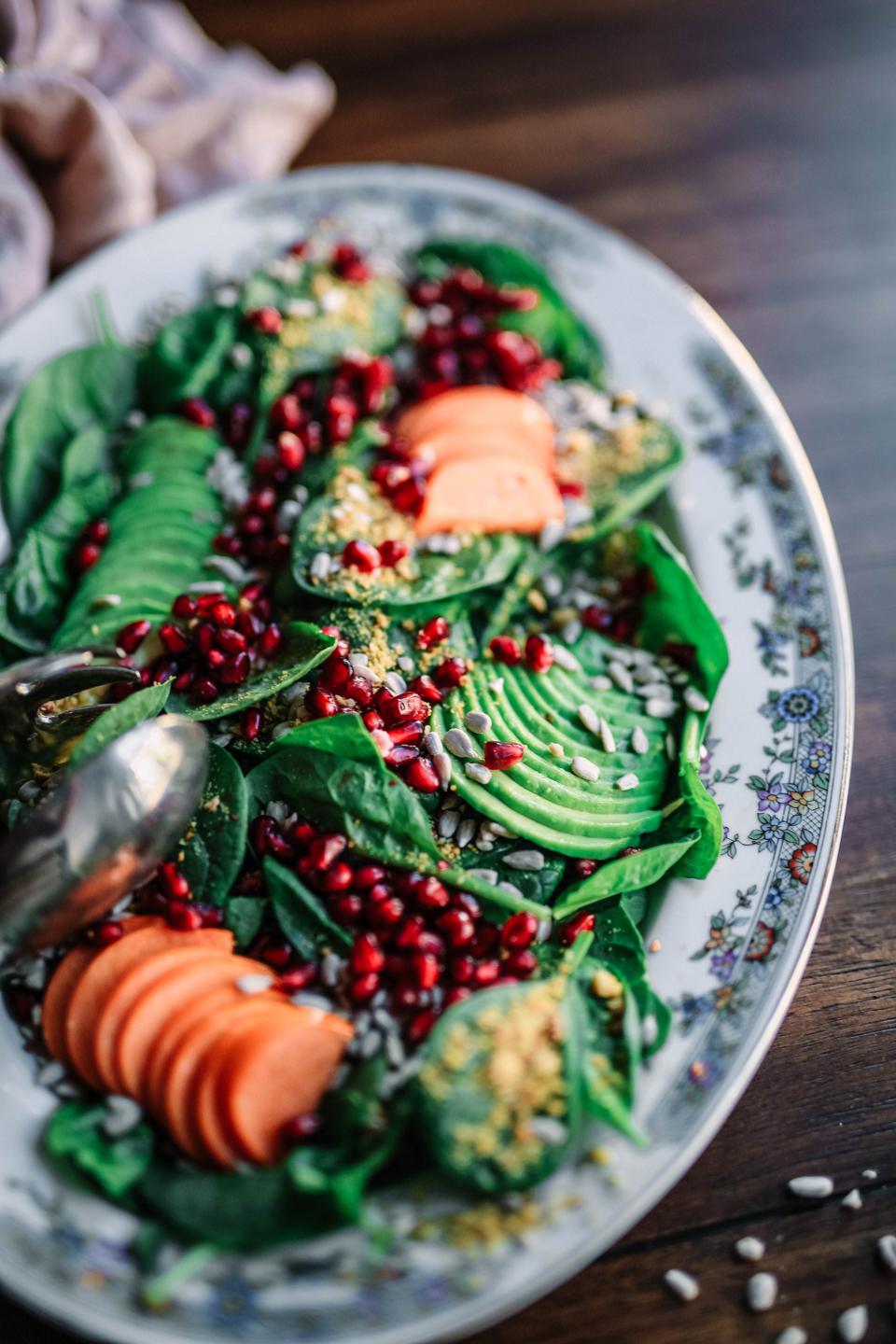
When it comes to mindful eating habits, one question that often comes up is the impact of mixing different types of food together. Many people worry that combining different types of food can lead to unhealthy consequences, but the truth is that there are many benefits that come from this practice.
Not only is it a great way to get creative in the kitchen, but combining different types of food can help you meet your dietary needs. For example, adding fruits to a salad can increase your intake of vitamins and minerals, while mixing grains with nuts can add more protein to your meal.
Another benefit of mixing different types of food together is variety. Eating the same food over and over can get boring, but when you combine different flavors and textures together you can create a delicious meal that can give you and your body the nourishment it needs. This type of mindful eating can also increase your intake of vibrant foods, which can help you achieve an optimal state of health.
This not only makes your meals more enjoyable, but it’s also a great way to explore food from different cultures and get creative with your cooking. This type of mindful eating can expand your palette and allow you to explore new dishes, which can be incredibly rewarding. In summation, mixing different types of food together can not only make your meals more interesting and varied, but it can also help you achieve a balanced and nutritious diet. So don’t be afraid to get creative in the kitchen and explore different types of food – your body will thank you!
Suggestions for intentional and mindful eating
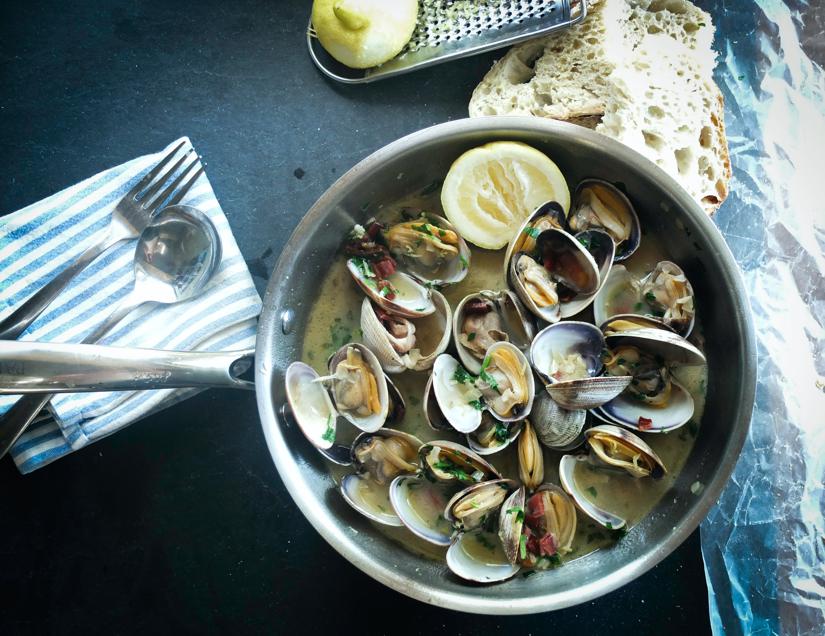
When it comes to eating in a mindful and intentional way, there are many things to consider. One important factor to consider is if mixing different types of food together is healthy or not. The truth is, it really depends on the types of food you are combining. For example, if you are combining two nutrient-rich foods from different food groups, such as whole grains and legumes, then the result can be a balanced meal with lots of vitamins and minerals.
Generally speaking, if your meal is balanced in terms of nutrition, then mixing different food types together can be a great way to get the most out of your meal. For example, combining cooked grains with cooked legumes gives you the benefit of both types of food, as each food group complements the other. This type of combination can make a meal richer in amino acids, vitamins, minerals, and fiber, as well as make it more interesting and delicious.
For example, if you’re combining starches and proteins, it’s important to include a healthy portion of vegetables or a salad to make sure you’re getting a balanced meal. Overall, mixing different types of food together can be a healthy way to enjoy a balanced and mindful meal, as long as you’re incorporating nutrient-rich foods from different food groups and proportioning your meals properly.
The benefits and risks associated with combining different food types and the importance of mindful eating habits

Understanding the benefits and risks associated with combining different food types, and how mindful eating habits can improve overall health and wellness, is an important part of developing a healthy and balanced diet. The answer to the question posed is not as simple as one might believe.
In some instances, it is perfectly okay to combine different types of foods, such as carbohydrates and proteins. However, it is important to understand the effects of certain combinations, in order to ensure that each meal is providing optimal nutrition. In general, the benefits of combining foods can be quite broad.
By combining different foods, we can ensure that our bodies are receiving all of the essential nutrients that are required for healthy functioning. Additionally, combining certain foods can help to reduce the risk of certain illnesses, such as heart disease or diabetes, by providing a balanced diet.
When it comes to the risks associated with combining foods, it is important to understand what types of food combinations should be avoided. For example, while it is generally fine to mix carbohydrates and proteins, it is important to avoid combinations of simple carbohydrates and simple fats, such as toast and butter.
As such, it is important to be aware of what types of foods should be avoided, and to make sure that each meal is balanced and provides the necessary nutrients. In conclusion, combining different types of foods can certainly have many benefits, but there are also risks that need to be taken into consideration.
To ensure optimal health, it is important to practice mindful eating habits and to pay attention to the types of food combinations that are being consumed. By understanding the benefits and risks associated with food combinations and by being mindful about our eating habits, we can maintain a healthy and balanced diet that will keep us feeling our best.
Bottom Line
Is mixing different types of food together unhealthy? After thorough research and analysis into the answer to this question, it’s clear that often, it’s not – as long as the food is healthy and fresh. It’s all about balance, and creating nutritious meals that your body can benefit from. Mixing different foods together can create a variety of flavors, textures, and colors that can enhance your culinary experience while ensuring the food you eat is healthy and nutritious.
Creating meals out of different types of foods can also introduce a variety of nutrients. By varying your food choices and combinations, you are widening the range of vitamins, minerals, and antioxidants that your body needs. Whether it’s mixing meats and vegetables with grains or fruits and dairy, there are many combinations available to you.
Unhealthy processed foods, carcinogenic fats, and foods that are high in calories can make their way into your meals if you’re not mindful of what you’re eating. It is also important to practice portion control and not over-indulge, as eating too much of even healthy food can lead to health complications.
The bottom line when it comes to mixing different types of food together? As always, moderation is key. Eating a variety of nutritious foods is the best way to ensure your body is getting all the vitamins and minerals it needs, so mix away but make sure you’re paying attention to what you’re eating. Make sure your body is receiving the necessary nutrients it needs, and always practice portion control.
Are you up for experimenting and creating unique combinations of flavors, or do you prefer to stick to the tried-and-true methods? Are you looking to try out some exciting new recipes, or are you looking for simple meal ideas? Whatever your decision, make sure to be mindful of what you’re eating, and enjoy!
Mixing different types of food together can be a great way to create delicious, nutritious, and varied meals. It’s all about being mindful of eating healthy, fresh ingredients, and consuming them in moderation. So if you’re looking for something new and exciting, don’t be afraid to get creative in the kitchen. What’s the most interesting combination you’ve ever tried, or the one you would like to try the most?
Answers To The Most Common Questions
What are the dangers of food fads?
Malnutrition: Many food fads contain very limited amounts of certain essential vitamins, minerals, proteins, and other essential nutrients. Without proper nutrition, a person can suffer from a wide array of potential health problems.
Taking things too far: Fad diets often involve extreme changes in eating habits that can be harmful to one’s health. Excessive elimination of certain macronutrients can cause deficiencies, as can an extreme emphasis on certain food ingredients.
Disordered eating patterns: Food fads can often be associated with disordered eating patterns that may lead to an unhealthy attitude towards food and dieting. These unhealthy eating styles may lead to guilt and worry over what to eat and can lead to chronic dieters constantly feeling like they’ve failed.
Unsustainable: Fad diets place unrealistic restrictions on food choices and are often difficult or even impossible to maintain long-term. This lack of sustainability means that dieters often return to their pre-diet habits and thus don’t see any health benefits from their dietary changes.
What is meant by food fads?
Food fads can range from special dietary preferences to specific dishes or ingredients associated with a particular trend. Popular examples of food fads include veganism, avocado toast, chia pudding, matcha flavoring, and green smoothies.
Used Reference Links:
https://www.nutrisense.io/blog/good-and-bad-food-combinations
https://www.builtlean.com/food-combining/
https://www.stylecraze.com/articles/dangerous-food-combinations-to-avoid/





